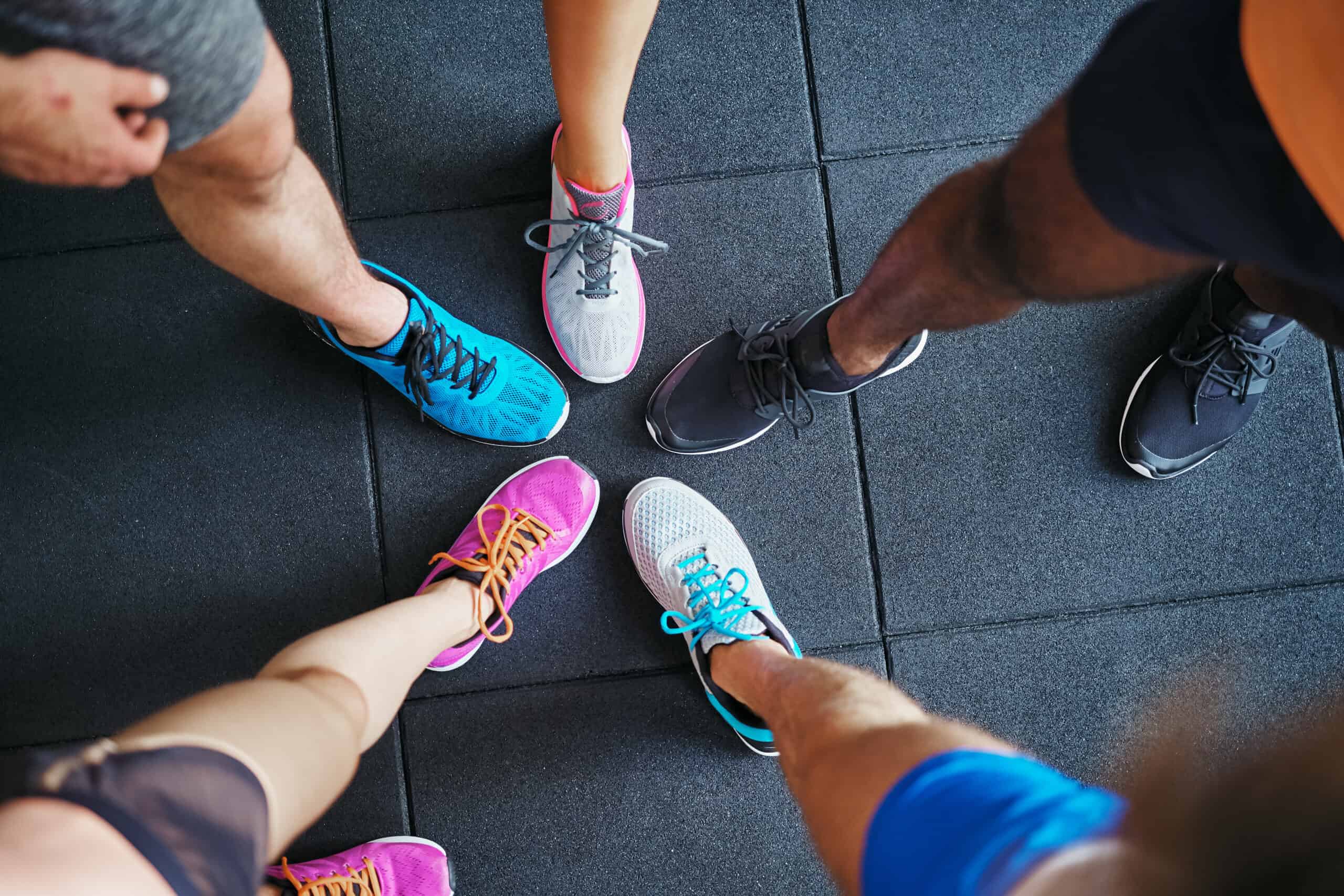By Pat Staszak, PT
As city dwellers our feet play a central role in transporting us where we want to go. When we’re looking to develop healthy movement and posture, our feet are a big piece of the puzzle. They connect us to the earth and determine every step we take—literally. If you’ve experienced foot pain you want to take extra care when shopping for shoes.
A healthy foot flattens, or pronates, to absorb shock after the heel hits the ground. Then as our heel lifts and weight is transferred to the front of the foot, the foot becomes a rigid lever and supinates to propel us forward with each step.
Shoes protect your feet, and provide balance for the body. They should be flexible enough so you can walk with a natural movement (normal gait pattern,) but should also provide support for your feet. Generally, more supportive shoes are needed for feet that overpronate (flattens too much) or lack strength. People with feet that are strong, have a good arch and are not overly flexible can usually get by with less support in their shoes.
Subhead: How do you define good support?
Support can come from a number of characteristics of the shoe:
- Last: The shape of the sole can provide support. Basically; the wider the last, the more potential for support in the shoe.
- Sole: It is a very important piece in the overall support of the shoe. The sole should fit and support your foot, but still be flexible enough for you to be able to roll through your foot with each step.
- Laces: The laces act to pull and tighten up the shoe so the whole shoe provides support.
- Backstrap: Shoes and sandals should have a backstrap to stabilize the heel when walking to allow for a normal gait pattern.
Tips for shoe shopping:
- Wait until the afternoon to shop. Your feet naturally expand during the day.
- Wear the same type of socks that you intend to wear with the shoes.
- Ask the salesperson to measure both of your feet. Get measured every time you buy new shoes, because feet change with age. If one foot is larger or wider than the other, buy a size that fits the larger foot.
- Stand in the shoes. Make sure you have at least a quarter- to a half-inch of space between your longest toe and the end of the shoe. Wiggle your toes to make sure there’s enough room.
- Walk around in the shoes. Is there enough room at the balls of the feet? Do the heels fit snugly, or do they pinch or slip off? Does the shoe absorb shock and allow for efficient load transfer and push off.
- Find shoes that fit from the start, not shoes that need to be broken in.
- Trust your own comfort rather than a shoe’s size or description.
- Make sure the toe box in the front of the shoe is wide enough so the front of the foot does not get compressed.
- A rubber sole provides better shock absorption than a leather shoe.
Shoe Brands We Like At Andersonville Physical Therapy
It takes a little research and some patience to find the right shoe for you. These days, it is much easier than it used to be to get a supportive, yet (mostly) fashionable shoe.
Below are a few that we like at APT. This list is not exhaustive, but will give you a place to start.
You can also note what is not on the list: Flip flops, clogs, shoes with no support, and heels! These are OK for occasional use, but they do not work well for prolonged walking.
What to do if new shoes do not relieve foot pain?
If making changes in your shoe wear does not relieve your foot pain you may benefit from physical therapy. After a thorough foot, lower body and gait evaluation, we identify your foot type and the amount of support your foot needs. We recommend a footwear solution that will work best to keep your foot and entire lower body in a neutral position.
Heal Today’s Injury — Move Better for Life
To schedule an appointment, complete our appointment form or call our Chicago office at (773) 907-3599 during regular business hours. We will evaluate your injury and design a unique treatment plan for you and give you the tools to be successful at achieving your goals. We are a passionate team ready to help you get back on your feet and back in the game.



Comments